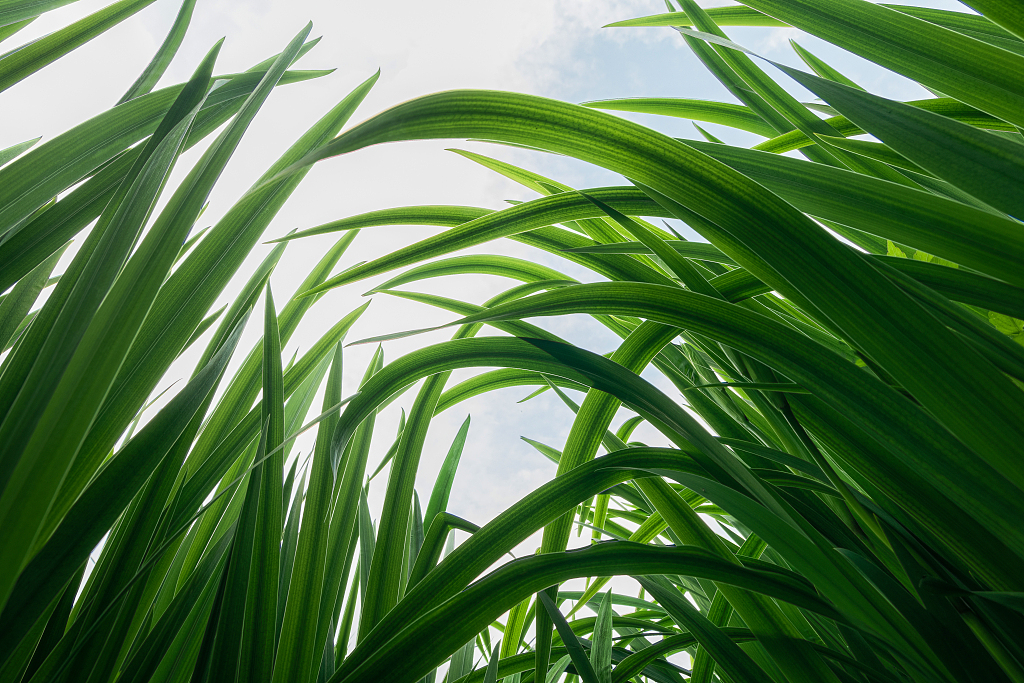After attending the sixth China-Arab States Expo, which was held at the end of September in northwest China's Ningxia Hui Autonomous Region, Zhang Hong'en headed straight for a local planting base in search of Juncao, a high-yield feed crop with the potential to diversify the diets of livestock in Mauritania.
The Ningxia native said that the natural conditions in Mauritania, a country in northwest Africa that is 80 percent desert, have a lot in common with those in his hometown. With a dry climate and limited arable land, the country faces tremendous challenges in its agricultural development.
First held in 2013, the China-Arab States Expo has become an important platform for China and Arab states to promote pragmatic cooperation and advance high-quality Belt and Road cooperation.
In 2015, China's Ministry of Commerce and the Ningxia government established an animal husbandry technology demonstration center in Mauritania as part of China's efforts to promote agricultural cooperation with Arab states.
Zhang was placed in charge of the center and, together with the first group of Chinese experts dispatched to Mauritania, provided local residents with technical guidance on animal husbandry, forage production and forage processing.
Animal husbandry is one of Mauritania's pillar industries, but the country's traditional grazing model has severely damaged the local ecology. "As the grass is often eaten up by cattle, realizing the large-scale cultivation of forage crops in the desert is key to the sustainable development of Mauritania's livestock industry," Zhang said.
Ren Xueshan, a grass expert from Ningxia, was sent to work at the demonstration center in 2017. After planting approximately 40 varieties of forage crops in the desert and carrying out numerous comparative tests, Ren identified the most suitable options for the local climate and soil conditions: alfalfa and Gaodan grass.
"Widely grown in northern China, these two varieties are resistant to both heat and cold, and they are suitable for sandy soil. They are the ideal grazing grass types for Mauritania," Ren said.

Alfalfa is one of the plants Ren Xueshan chooses for Mauritania. /CFP
Alfalfa is one of the plants Ren Xueshan chooses for Mauritania. /CFP
The center also introduced water-saving irrigation methods to Mauritania, including drip and sprinkler irrigation, and promoted the use of organic fertilizers such as cattle and sheep manure to improve the soil.
Through a combination of techniques, the demonstration center has planted nearly 1,000 mu (about 67 hectares) of forage crops in some of the world's least fertile areas, successfully turning the barren desert green while diversifying the local cattle feed.
Over the years, the cultivation of alfalfa and Gaodan grass has expanded to more regions across the country, winning local praise. In recognition of Ren's work, the Mauritanian president in 2019 awarded him a national medal for his outstanding contribution to the progress of the country's agricultural technology.
In addition to providing abundant and nutritious feed options for livestock, the demonstration center also focuses on improving cattle breeds. "Through embryo transfer and crossbreeding, we are developing breeds that can provide better milk and beef for Mauritania," Zhang said.
The average daily milk yield of local-breed cows is 2.5 liters, and the new-breed cows produce five to 10 times more milk on average as they are better adapted to the environment, according to Zhang.
To date, the center has bred 40 calves through embryo transfer and delivered over 400 crossbred calves.
"We have provided some new-breed cattle to local farmers and are monitoring their genetic stability and adaptability to the environment closely," Zhang said, noting that the performance of the new breeds needs to be tested over time and through large-scale breeding.

Closeup of Gaodan grasses. /CFP
Closeup of Gaodan grasses. /CFP
Over the years, the demonstration center has held many training sessions for animal husbandry professionals, providing technical and managerial instruction to over 1,200 local herders. Numerous Mauritanians have applied to work at the center to learn about technology.
Chinese veterinary expert Gu Zichun trained over 400 people during his yearlong stay in Mauritania. "Many young people in my classes have now become the backbones of their country's animal husbandry and veterinary industries," Gu said proudly.
Over the past decade, Ningxia has dispatched more than 20 agricultural experts to countries such as Mauritania and Angola to provide technical guidance on animal husbandry, agricultural machinery and water conservancy, helping locals shake off poverty.
"When we first came to Mauritania, the local people were not doing anything about the environment and were letting nature take its course," Zhang said. "After seeing what we have done over the years, however, they have come to see that people are capable of improving their natural environment, and they have taken action to build better lives."
(If you have specific expertise and want to contribute, or if you have a topic of interest that you'd like to share with us, please email us at nature@cgtn.com.)
Source(s): Xinhua News Agency